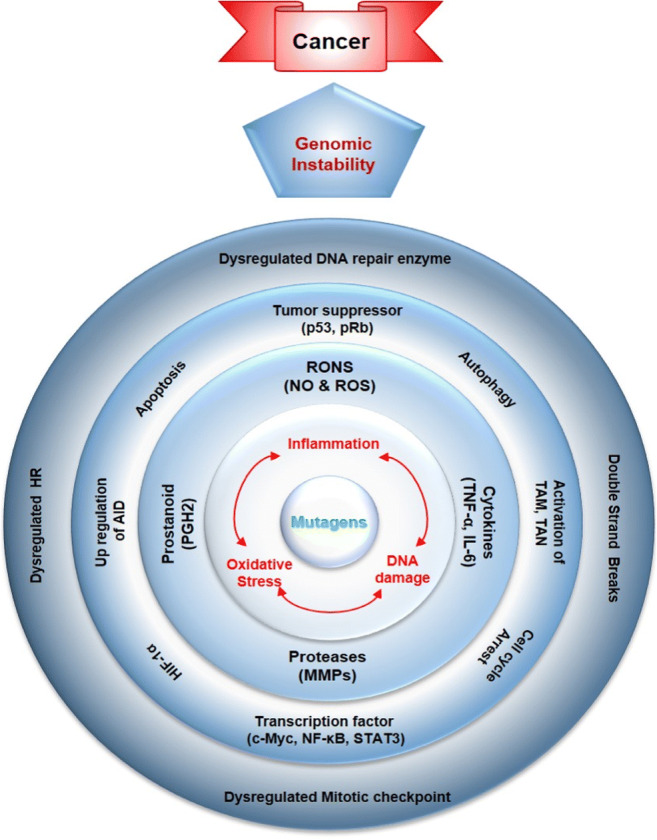- Record: found
- Abstract: found
- Article: not found
Unboxing the molecular modalities of mutagens in cancer

Read this article at
Graphical abstract
The etiology of the majority of human cancers is associated with a myriad of environmental causes, including physical, chemical, and biological factors. DNA damage induced by such mutagens is the initial step in the process of carcinogenesis resulting in the accumulation of mutations. Mutational events are considered the major triggers for introducing genetic and epigenetic insults such as DNA crosslinks, single- and double-strand DNA breaks, formation of DNA adducts, mismatched bases, modification in histones, DNA methylation, and microRNA alterations. However, DNA repair mechanisms are devoted to protect the DNA to ensure genetic stability, any aberrations in these calibrated mechanisms provoke cancer occurrence. Comprehensive knowledge of the type of mutagens and carcinogens and the influence of these agents in DNA damage and cancer induction is crucial to develop rational anticancer strategies. This review delineated the molecular mechanism of DNA damage and the repair pathways to provide a deep understanding of the molecular basis of mutagenicity and carcinogenicity. A relationship between DNA adduct formation and cancer incidence has also been summarized. The mechanistic basis of inflammatory response and oxidative damage triggered by mutagens in tumorigenesis has also been highlighted. We elucidated the interesting interplay between DNA damage response and immune system mechanisms. We addressed the current understanding of DNA repair targeted therapies and DNA damaging chemotherapeutic agents for cancer treatment and discussed how antiviral agents, anti-inflammatory drugs, and immunotherapeutic agents combined with traditional approaches lay the foundations for future cancer therapies.

Related collections
Most cited references347
- Record: found
- Abstract: found
- Article: not found
Inflammation and cancer.
- Record: found
- Abstract: found
- Article: not found
Cisplatin in cancer therapy: molecular mechanisms of action.
- Record: found
- Abstract: found
- Article: not found
